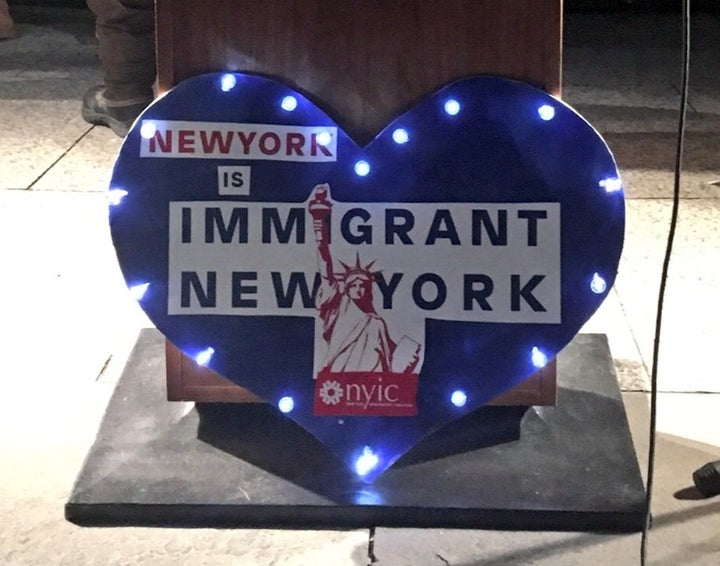
In 2016, total spending for the United States totaled a little less than four trillion dollars. That’s a “4” followed by 12 zeros (4,000,000,000,000). The majority of that money comes from federal income taxes, corporate taxes and payroll taxes, basically, quite literally, that means you. Over the next several months, the President and Congress (Republicans and Democrats alike) will be engaged in an elaborate and complicated dance to determine how that money is spent, including and especially how Trump plans to fund his promises to crack down on immigration. This piece will examine some of those requests by the President—but first, a little background on the budgeting process.
The first thing to know is that almost two thirds of the federal budget is set aside as mandatory spending (about $2.5 trillion) for entitlement programs like Social Security and Medicare. Neither Congress nor the president has any direct control on the specific amount of money allocated for these programs. Instead the money is allocated automatically based on the number of people eligible for the programs and the cost to cover them.
So, while Congress and the president can make policy changes to the entitlement programs that will in turn have an effect on the total spending for mandatory spending, like raising the social security retirement age or expanding prescription drug benefits, they cannot reduce or increase the budget by a specific dollar amount.
That leaves the remaining one third of the budget, about $1.1 trillion, as discretionary spending. These are the funds Congress and the president get to play around with―and sometime shut the government down over. By far the largest budget item in the discretionary funding is defense spending, which usually receives a little more than half of all discretionary funding (almost $600 billion in 2015). This leaves a little less than $600 billion for all other government spending programs, including programs like Head Start, Veterans Affairs, Education, and, of course, the Department of Homeland Security (DHS).
in Fiscal Year (FY) 2016, DHS received $41 billion in funding. While the Department has a number of responsibilities pertaining to the welfare of the country―such as managing counter-terrorism and cyber-security threats, and disaster preparedness―the two specific sections of the Agency that have received the most attention from the White House in the first three weeks are the ones that deal with enforcing the country’s immigration laws: Customs and Border Protection and Immigration and Customs Enforcement (ICE).
Donald Trump, his Executive Orders and the Federal Budget
Donald Trump has issued multiple Executive Orders over the first three weeks of his administration, ranging on everything from instructing agencies to gut the Affordable Care Act, to dramatically rolling back financial regulations, to approving the contract for the Dakota pipeline. But two of these Executive Orders will have significant federal budget implications, requiring significant funding increases from Congress in order to be implemented. These are the two Orders calling for increasing immigration enforcement against immigrants and their families currently living in the United States and ramped up security and enforcement at the southern border. The human toll of these two orders alone is hard to imagine, and the threats to due process rights and civil liberties of citizens and non-citizens alike will be huge.
Border Enforcement Executive Order ― Background and Costs
What many people don’t know is that Customs and Border Patrol (CBP) agents have extraordinary authority that far exceeds other law enforcement agencies. When they are operating within 100 miles of the border they are not constrained by the same Fourth Amendment due process rights afforded to individuals outside of the 100 mile zone. So, for example, CBP officers can stop anyone at a checkpoint anywhere within 100 miles of the border without first establishing any suspicion of wrongdoing; they are allowed to board public transportation throughout border communities to question passengers; and within 25 miles of the border they are allowed to enter onto private property (although not homes) without a warrant or probable suspicion.
The other important thing to know is that roughly two-thirds of the United States’ population lives within the 100-mile zone—that is, within 100 miles of a U.S. land or coastal border. That’s about 200 million people. So CBP’s reach is far and wide, and important to understand.
Throughout the campaign Trump propagated dangerous falsehoods about the situation at the border, creating an illusion that the border was a lawless wasteland of crime. That couldn’t be farther from the truth. The United States is currently experiencing the lowest level of unauthorized border crossings in four decades, border communities are some of the safest in the nation and President Obama deported more immigrants than any other president in history. Trump was, in essence, promising to find a solution for a problem that does not exist.
But this Executive Order it turns out, actually offers a solution to a different problem for the President―how to convince a certain segment of American voters to blame immigrants and refugees for their social and economic woes rather than the anti-worker, anti-middle class policies that his Administration is pursuing. All of this would be bad enough, if not for the human and financial toll of this “solution.”
The Executive Order calls for the following increases to the DHS budget:
Construction of a “Border Wall”:
- More than 650 miles of border fence already exists. According to DHS’ own assessment, the estimated cost of the remaining border wall segments will be $21.6 billion and take three and a half years to complete.
- According to the FY 2017 DHS budget, $274 million was spent on border fence maintenance. If 1200 additional miles of wall are built, the conservative estimate is that the maintenance costs of the border wall will triple to more than $750 million annually.
Increase CBP agents by 5,000 (from current level of 21,370 Border Patrol agents)
- Adding 5,000 CBP agents would cost approximately an additional $857 million per year, while border crossings and apprehensions by current CBP agents are at an historic lows.
- In FY 2012, Customs and Border Protection was funded at $11.7 billion, an increase of 64% since FY 2006. In 2011, there were 21,444 border agents, nearly double the number in 2006, making far fewer apprehensions because border crossings are at an all time low. And FBI crime reports from 2010 show that violent crimes in southwest border states have dropped an average of 40 percent in the last 20 years.
Expand Immigration Detention Capacity:
- The United States currently spends over $2 billion each year on immigration detention, about $5 million a day, to detain 34,000 immigrants every night. This order seeks to dramatically expand the number of immigration detention beds available on a daily basis, specifically located at the southern border. Although the exact increase isn’t specified, any new construction of facilities or contracts with for-profit prison corporations will be a considerable expense to the taxpayer.
Interior Enforcement Executive Order - Background and Costs
During the Obama Administration, a number of priorities and procedures were established in order to focus DHS resources on deporting undocumented immigrants with serious criminal records. This Executive Order seeks to eliminate those stated priorities and makes any undocumented immigrant currently living in the United States a potential target for deportation, regardless of any mitigating factors (such as length of time in the country, familial ties, community support, etc).
Trump’s Executive Order also seeks to ramp up the enforcement ability of ICE by tripling the number of interior enforcement agents, increasing workplace raids, empowering local police to act as immigration agents, and using military-style policing to locate undocumented immigrants. These tactics are not just meant to target individuals and their families, they also strike fear deep into the heart of our immigrant communities - and make no mistake about it, that is also a goal. These increased enforcement actions, coupled with the inflammatory statements by the President, will further terrorize, harass, and abuse immigrant communities and long-time residents, whether documented or not.
The Executive Order calls for the following changes to the DHS budget:
Tripling the number of Immigration and Customs Enforcement (ICE) officers
- Since the creation of DHS in 2003, spending on ICE has grown 85 percent, from $3.3 billion to $6.1 billion today, currently there are 7,995 ICE agents. Adding an additional 10,000 ICE officers would cost approximately $2.1 billion a year, which doesn’t include all of the non-ICE accompanying costs to deport additional immigrants such as court costs.
Federal Budget Timeline (*date estimates)
- January 3 - 115th Congress convened
- January - FY 2017 Budget reconciliation passed
- Mid-Feb* - Office of Management and Budget (OMB) Director confirmation vote
- March/April* - Potential DHS supplemental for FY 2017 budget (to fund EOs)
- April 28 - FY 2017 Continuing Resolution expires
- April/May* - Trump (OMB) sends Administration budget request to Congress
- April - June* - Budget committees in both houses work to pass budget resolutions
- June - September* - Appropriation committees (12 in each house) work to pass appropriation bills to fund their sectors of government.
- September 30 - FY 2017 budget expires
